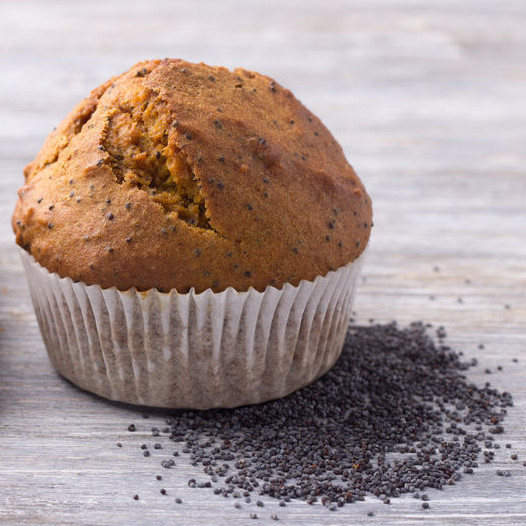Poppy Seeds
What are Poppy Seeds?
Poppy seeds are small, oval shaped, nutritious oilseeds obtained from the opium poppy (Papaver somniferum L) capsule. Their pleasant nutty taste and aroma make them suitable for baked goods such as bread rolls, cakes, cookies and biscuits.1
Several varieties of poppy seeds are known such as white, yellow, brown, blue and black. They contain small amounts of morphine alkaloids, such as morphine (18.6 mg/kg) and codeine (2.3 mg/kg).2 They can be found commercially in the following forms:
- Hulled and dehulled seeds
- Oil
- Flour
- Meal
Origin
Poppy seeds are ancient oilseeds thought to have originated in the Mediterranean area. They were first cultivated in the first century AD and used in bread making. Then, the seeds spread by the Roman Empire and its use in food production further developed in Europe.3
Currently, poppy seeds are produced mainly in Turkey and China. In the US, growing opium poppies is banned. However, importation of poppy seeds is permitted.4
Function2,3
Poppy seeds perform several functions in baked goods such as:
- Flavor: provide a rich nutty flavor, may be intensified by toasting
- Aroma: provide a mild nutty aroma
- Texture: contributes a crunchy texture
- Fat replacer: the seed oil can be used as a fat replacer
- Flour enhancer: the flour may be used as a partial substitute for wheat flour
- Thickenner: crushed seed are used to thicken fillings
Nutrition
Composition of per 100 grams:5
| Component | Grams |
| Water | 5.95 |
| Carbohydrates | 28.13 |
| Protein | 17.99 |
| Fat | 41.56 |
| Ash | 6.37 |
Poppy seeds are a good source of carbohydrates, minerals and essential amino acids. Also, they are a good source of essential fatty acids, linoleic and oleic acid, as well as known for their role in reducing incidence of heart disease and protecting against some cancers.1,2,7
Alkaloids, morphine and codeine content are insignificant when consumed appropriately. However, over-consumption may cause serious adverse health effects.2
Commercial production
The first step in manufacturing poppy seed derivatives is hot water washing (60°C /140°F ) for a long time to remove the morphine and other alkaloids from the seed.2
- Meal: obtained from crushing the seeds6
- Oil: obtained using cold-pressing followed by rendering through sun exposure6
- Flour: obtained from defatted poppy seed meal, through a similar process of size and humidity reduction6
Application
Poppy seeds are commonly used as toppings for bread, rolls, cookies, cakes and other baked goods. They are also used in traditional foods like “Hamantashen” a jewish pastry, “ kolache” a traditional czech sweet bun and several German yeast breads.7
Some considerations when cooking with poppy seeds:2,7
- Washing: reduces residual alkaloids that may still be present in the seed.
- Grinding: reduces residual alkaloids and releases part of the oil.
- Baking: cooking at high temperatures of about 135-220°C (275-428°F) for complete degradation of residual alkaloids and enhancing of the pleasant nutty tones.
- Storage: ground poppy seeds must be refrigerated to retard rancidity due to its high oil content.
FDA regulations
Poppy seeds are generally recognized as safe (GRAS) by the FDA.2
References
- Caballero, B. Encyclopedia of food sciences and nutrition. 2nd ed., Academic Press, 2003, pp. 5465-5477.
- Dasgupta, A. Critical Issues in Alcohol and Drugs of Abuse Testing. 2nd ed., Academic Press, 2019, pp. 449-460.
- Bernáth, J. Poppy: The Genus Papaver. 4th ed., Taylor & Francis, 2006, pp. 1-5.
- Dasgupta, A. A health educator’s guide to understanding drugs of abuse testing. 1st ed., Jones & Bartlett Learning, 2011, p. 136.
- U.S. Department of Agriculture, Agricultural Research Service. FoodData Central, 1 March 2019. https://fdc.nal.usda.gov/fdc-app.html#/food-details/171330/nutrients. Accessed 2 June 2020.
- Panda, H. Handbook on spices and condiments (cultivation, processing and extraction).1st ed., Asia Pacific Business Press Inc., 2010.
- Small, Ernest. Top 100 Food Plants: The World’s Most Important Culinary Crops. 1st ed., CRC Research Press, 2012, pp. 435-440.


